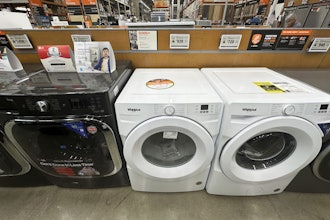
Manufacturer-to-distributor channels in the durable goods B2B sector, have remained, largely, unchanged for decades. There has been the occasional change in ownership, product problems, or customer issues that precede squabbles but, by and large, the relationship between B2B manufacturers and their distributor channel partners has grown; often for generations.
These decades-old manufacturer-to-distributor partnerships have much at stake. There is, at any one time, around $600 billion in inventory sitting in distributor warehouses in the $3.25 trillion sector. Our research at Benfield Consulting and associated work, however, on the emergence of B2B e-commerce in durable goods products and broad sectors of MRO/Institutional/Industrial finds that these, more than less, peaceful partnerships may be coming to an end; channel conflict of the kind where relationships come apart and reform are close at hand. This has implications for all B2B sectors where distributors are losing or struggling in the online battle for the customer.
B2B Durable Goods Distribution; A Channel Struggling Online
Since 2013 we've research the wholesale distribution sector on e-commerce. Our work includes numerous Sponsored projects regarding the distribution base and several involving manufacturers and end customers. Distributors have been slow out of the blocks with technology with 40 percent of companies still using proprietary programmed online platforms that became non-competitive a decade ago. This reticence to engage technology means that some 62 percent of distributors sell less than 5 percent online and another 23 percent sell between 6 percent and 20 percent online. It is not until we pass the 20 percent of sales online threshold that we find sustained online organic growth; a level that represents only 10 percent of all distributors. From 2016 to 2018 distributors surrendered online sales. In 2016, distributors averaged 12 percent of all sales online, by 2018 this had fallen to 9 percent of sales online or a drop of 30 percent. During this period, B2B online sales grew to 15 percent of total market or approx $1 trillion in both durable goods and non-durable goods markets. Annual growth online is 7 percent per year which is 3x the traditional distributor growth and means that share loss will likely accelerate as Millennials come into the managerial ranks. (As a reference, our surveys represent broad sectors of MRO/Institutional/Industrial that covers approx 20 percent of durable goods distribution sales. There are three other surveys, two end-user, and one distributor that point to decline across more broad sectors of durable goods.)
Today, B2B Durable goods products total sales of approx. $3.25 trillion in North America. The online portion is estimated at 15 percent of sales, or $480 billion. Distributor sales volume of less than 15 percent online, on average, is sub-par. At 9 percent in online sales, distributors represent $288 billion in manufacturer sales through the digital channel. However, 9 percent of sales online is 60 percent of online volume (9 percent/15 percent) and means almost $200 billion is sold online that is not part of the distributor online effort. Where did the volume go? Our work finds that non-traditional online competitors including big-box retailers grew their share, new-age competitors took a fair amount of sales, and manufacturer direct shipments increased. This means that the decades-old old full-service distribution channel, full of branches and sellers is likely in digital decline and, as e-commerce grows, there will be a need for manufacturers to change channel policy and follow the growth. We spend the rest of this blog on what manufacturers should do to correct the situation and preserve their markets.
Channel Policy Changes to Succeed Online
The field of channel management has laid dormant for decades. Once a vibrant subject in B2B ranks and taught at the nation's top business schools, the discipline has fallen on hard times. It is difficult to find the subject as a stand-alone discipline and it is given, more often than not, scant review in marketing courses. We feel this is about to change; especially in the fractious durable goods markets where, for over a century, wholesale distributors have dominated. We give the following advice for manufacturer channel managers, marketers and executives to help preserve down channel sales.
1) An ounce of good measurement is worth a pound of middleman rebuff sales fluff.
If you want to know if your channel is broadening their online buying habits, SURVEY! the end buyers. This means, either with or without your distributors, getting a random list of distributor customers and find out their online habits, where they buy, why, what, how much, and any other pertinent question. When we present our distribution research, we are constantly bombarded by "rebuff sales fluff" from distributors, associations, co-operatives, etc. Our retort is simple, show us yours and we'll show you ours-research that is-but we almost never get a reply. Once you have good research, you can begin to piece together a better picture of which channels and channel members are growing online.
2) Don't hesitate and don't wait to set up new channels if they demonstrate online growth.
If your primary distribution channel is in online decline, patience is not a virtue. If your research shows new channels that are quickly growing, then you should do some quick face-to-face with the new entrants, find out what they do, how they succeed online and state your interest. A recent research article in MIT/Sloan Mangement Review found that 47 percent of global online sales were fulfilled by 17 percent of companies classified as New Age. Generally speaking, these firms have been around for 10-15 years or less and they slice apart traditional full-service firms' markets in ways that are not always evident. These New Age firms are made for online and do almost all their business digitally. Researching them is not always easy but some time spent on Google doing research and talking to end users can usually pinpoint to New Age competitors.
3) Don't waste down channel monies on things that don't work.
Most distribution firms, other than the largest Billion dollar plus players, are members of co-operatives. These firms, over time, have done much to put manufacturer and distributor together to grow markets. However, as the industry digitizes, we have found scant correlation between co-operatives and their market development efforts for online sales. It is still early in the game and some of these efforts including content development, software development, etc. may see online success, but today these efforts don't seem to be working. If you want to research the effect of any particular co-operative, start with the end customer and include the distributor(s) in the survey(s). Once the respondent data is collected, you can match the distributor to the co-operative and gauge positive effect(s) they may have on channel sales. In a declining channel, co-operative demands for increased market development funds resemble ransoms; if they don't grow the online top-line, consider that much of these monies are wasted.
4) Product content and it's ability to be syndicated is the best online sales effort you will ever have.
Numerous research projects find that the single most important element of a satisfactory online experience, that is worth repeating, is the quality of online content. Furthermore, if the content is not arranged in a way that is relevant to the buyer, it doesn't help consummate the sale. And, finally, if the content is in error, obsolete, or missing key attributes, the buyer often doesn't come back. Good content takes a competitive PIM and you can go to Forrester Wave rankings to select a good PIM provider. The PIM allows the manufacturer to arrange, update, and stream product content to the channel. Additionally, a PIM with a robust syndication module can greatly help introduce new products, new technologies, and solution sell. If your distributor does not have a PIM and insists they can fairly represent you online using second-hand content, don't believe it. The best content is straight from the manufacturer, period. PIM's are indispensable in B2B online markets where pull-through selling, application selling, and solution selling are a big part of the marketing/sales mix.
5) Don't believe that technical wizardry and tech talk means online success.
Twenty percent of distributors sell 80 percent of the online volume and this has been true for many years. Of the online Pareto, only half make it to any sustained organic online growth. If you want to find who the online winners are in your industry, rely on your end user research to identify them and don't rely on industry scuttle or self-promoters on their online prowess. We often find where otherwise successful distribution firms have trouble online despite significant investments in technology. There are plenty of firms who have really good tech but sell less than 5 percent of their demand online — we call this a Digital Washout. The critical elements to online middleman success include a technology platform of transaction suite, PIM, punch-out, faceted search, and quotation management and this is only a starter. Today, the competitive online advantage is moving from the e-software platform to corporate structure and new online models. In essence, top online distributors streamline sales efforts, reduce redundant brick and mortar footprints, and develop new age business models of their own.
6) Don't be afraid to change the way you compensate the channel for online progress.
Volume discounts and channel monies from the manufacturer are predicated on sales volume which has much to do with scale economies in fixed-cost industries. Today, the success dynamic is moving from sales volume only to include the digital ability of the channel partner. Sales volume is important but the channel partner should show verifiable progress in online sales to earn discounts or funding. Consider changing channel compensation or rewards for those who exhibit online growth and away from firms who can't cut it online. You may need to check with your attorney on Robinson-Patman legislation on the change in compensation or discounting but these laws have been mitigated over the years and aren't nearly as powerful as they used to be.
7) It's about the C Level and the Research
Adding additional channels, changing channel compensation to reward for online sales, and other efforts to grow online, won't endear you to existing relationships. The best means to tell if a distribution partner is willing to do what it takes to grow online is what the C-Level does. If the guys at the top are doing the things it takes-investment in tech, streamlining the full-service firm, new online models etc. then they are serious about their online work. If they talk a good game but don't back it up, then it is likely they are not going to be an online force. Remember that 1 in 4 B2B products will be sold online by 2024/5. A very good way to test a middleman's sincerity is their willingness to do joint end-user research online. If they are willing to survey their online customers and share the data, then that is a good start. If they work with you to design the research instrument-so much the better. If you propose this and they "want to think about it and get back with you," and then don't follow up-you have your answer.
8) Selling direct takes serious planning and number crunching.
Plenty of manufacturers are considering selling direct to the end-user market and bypassing traditional distribution. Going direct is not simply setting up a site and taking orders. The manufacturer should consider different end-user segments and their online needs-our work finds that different segments have very different needs in content, site design, and functionality. Also, standard accounting analyses don't always work when going online and selling direct. There are savings of co-op and down-channel funds that should be considered, the probability of credit risk, and fulfillment costs that aren't found in product margins in manufacturer cost accounting. We advise careful financial analysis of the merits of selling direct before doing so. Hastily planned online sales efforts can cost a lot of bottom line dollars if they are not analyzed with proper metrics.
 Scott Benfield
Scott BenfieldThe move of B2B Durable Goods markets online grows at 7 percent per year. Research shows that many traditional full-service distributors are losing the online battle. Manufacturers are encouraged to complete end user research regarding online buying habits and preferences to understand if their distributors and supporting co-operatives are having a positive effect and what omni-channel entrants are doing online. Waiting is not recommended; channel managers, marketing managers, and executives in manufacturing firms should know how the online sales of their products are consummated and if they are losing or gaining as digitzation of the broad sector grows.
Scott Benfield is a consultant to B2B channels for distributors and manufacturers. He is also a member of Digital Channel Advisors, an association of consultants who help mature B2B firms succeed online. He can be reached at [email protected] or (630) 428-9311.























